Introduction
Navigating the transformation of a corporation in dire straits is a critical endeavor that requires a sharp eye for detail and an unwavering commitment to strategic overhaul. This article delves into the key elements of a successful business turnaround strategy, providing practical advice and insights to CFOs and finance professionals. From assessing the current state of the business to executing the turnaround plan, each section explores essential aspects of the turnaround process.
With case studies highlighting successful turnarounds and statistics underscoring the necessity of adaptation in today's competitive landscape, this article offers actionable guidance for CFOs aiming to steer their organizations towards recovery and growth.
Understanding the Need for a Turnaround
Navigating the transformation of a corporation in dire straits is a critical endeavor that requires a sharp eye for detail and an unwavering commitment to strategic overhaul. Take, for instance, Nets, a seasoned player in the digital payment solutions space. With a legacy spanning over five decades, Nets faced the monumental task of retrofitting their operations to align with modern demands. The company's journey emphasizes the significance of recognizing the early signs of financial trouble and the compelling necessity for a revitalization plan.
At the core of their strategy was the optimization of technical data presentation—transforming dense tables and complex schemata into user-friendly formats. Karmela Peček, an Instructional Designer at eWyse Agency, highlights the challenge: "Our goal was to transform all the tables and schemes into new forms that would be interesting enough to motivate users to discover information on their own." This initiative was part of a broader effort to inject fresh perspectives into their offerings while ensuring compliance with stringent industry regulations surrounding fraud protection, KYC, and Anti-Money Laundering standards.
Moreover, as 66% of successful company reorganizations include a clearly articulated communication plan, Nets also focused on onboarding processes to yield tangible improvements. Transparent communication is not merely a courtesy but a strategic tool; it fosters an environment of trust and clarity during tumultuous restructuring periods.
Accepting transformation, as Joan Beets sagely stated, 'Transformation is the sole consistent element in life – and in business,' is essential. For Nets, this meant fostering innovation and welcoming calculated risks by empowering employees and staying attuned to customer feedback. This approach not only invites a culture of continuous improvement but also aligns product development with evolving market needs.
The adage of listening to customers and team members rings true, as it is vital for recognizing when change is necessary. Creating a structured process to evaluate and execute adjustments or pivots is crucial. As James Mohs from the Pompea College of Business at the University of New Haven advises, knowing when to seek external advice, such as from a bankruptcy attorney, is pivotal after all other options are exhausted.
In a world where only 25% of small enterprises survive beyond 15 years, a well-crafted turnaround strategy is not just beneficial; it is imperative for survival. As we progress deeper into 2024, with over 33.2 million small enterprises in the United States alone, the capacity to change direction and adjust can determine whether one thrives or simply survives.
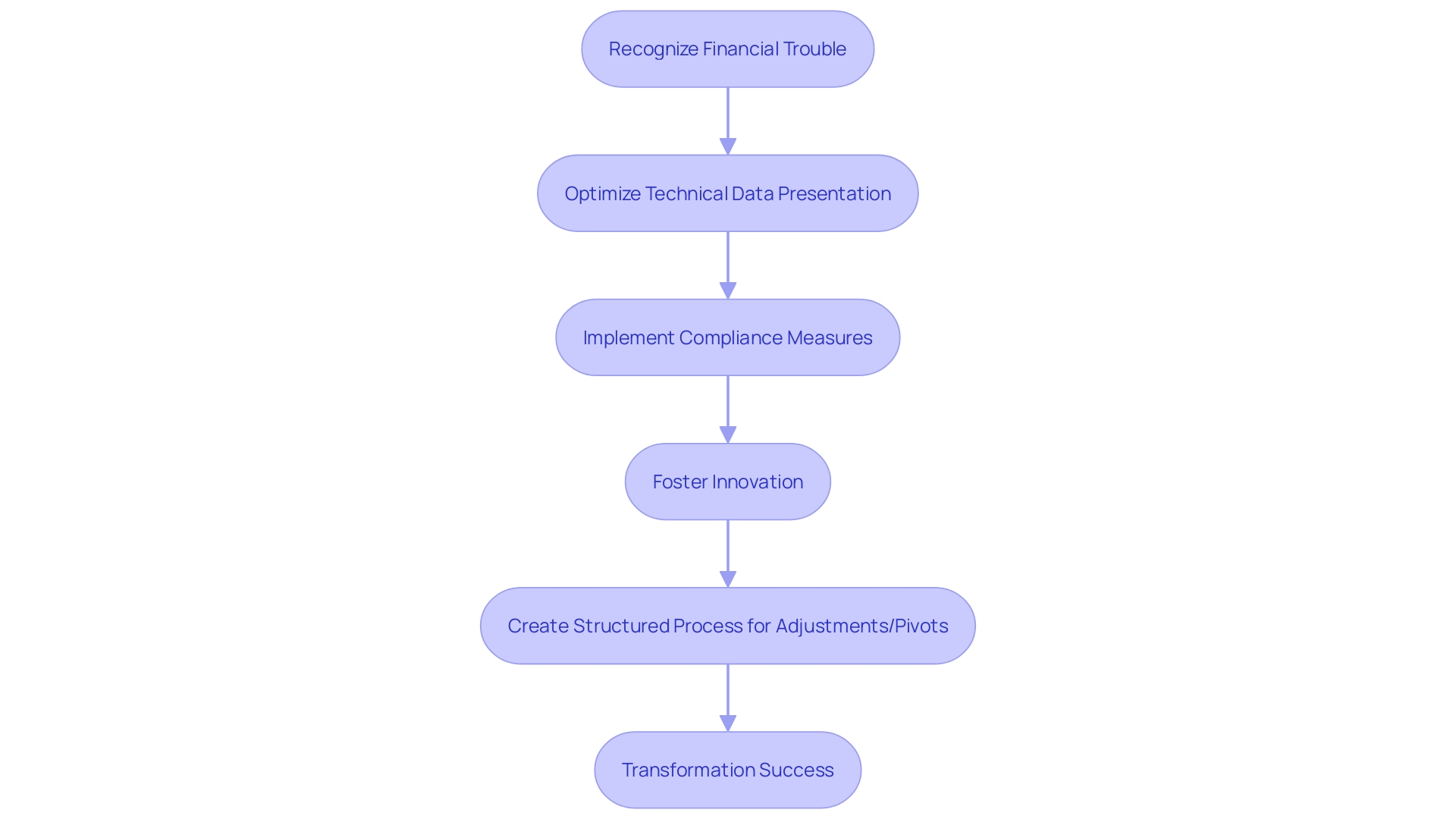
Assessing the Current State of the Business
To establish the foundation for a successful corporate transformation, start with a comprehensive evaluation of your company's health. Delve into your financial records, operational workflows, and market position to identify the underlying issues that are hindering growth. For instance, a leading hotel experienced a surge in Food & Beverage sales following a strategic reevaluation that capitalized on its central location. Similarly, fostering a culture of innovation and actively seeking customer feedback can uncover gaps in your service or product offerings. Market competition requires that companies reassess their approaches regularly, with 51% indicating growth possibilities as the driving force for adjustment. Moreover, 79.7% of enterprises acknowledge the need to shift every two to five years to stay competitive. Integrating change management practices is not just beneficial; it's imperative, as it can significantly raise the odds of successful strategy implementation in an ever-evolving digital landscape projected to grow to over a trillion dollars by 2025.

Identifying Root Causes of Business Problems
When starting a turnaround, it's crucial to first analyze the contributing factors of the downturn. A case in point is the transformation of Stora Enso, a venerable paper manufacturer that pivoted to a renewable materials company amid declining paper demand. Their approach was systemic; they laid off a significant portion of their workforce and appointed a new CEO to steer towards profitability. Their success highlights the significance of identifying changes in demand, such as the decrease in newsprint use, which prompted a strategic shift to innovative products like sustainable construction materials.
In addressing your company's challenges, consider the method used by Stora Enso: begin with a thorough root cause analysis (RCA). Evaluate conversion rates, for example, to pinpoint the exact stage where a breakdown occurs. This is not merely for times of trouble but also to understand the drivers behind unexpected successes. It's about asking the right questions—"What is the root issue?" rather than "Whose fault is it?"—to foster a solution-focused culture.
To be effective, solutions must be actionable and meet specific criteria: they must prevent the issue's recurrence, be within your control, align with your goals, and not introduce new problems. This is underscored by the fact that over half of businesses cite competition and growth opportunities as drivers for change, with technology advancements being a key factor. Keeping in line with this, create a corrective actions tracking program to ensure that each step taken is accountable, measurable, and contributes to the overall benefit of the organization.
By taking a structured approach to problem-solving, rooted in facts and clear problem definition, you can navigate through challenges and direct your company towards a successful turnaround.
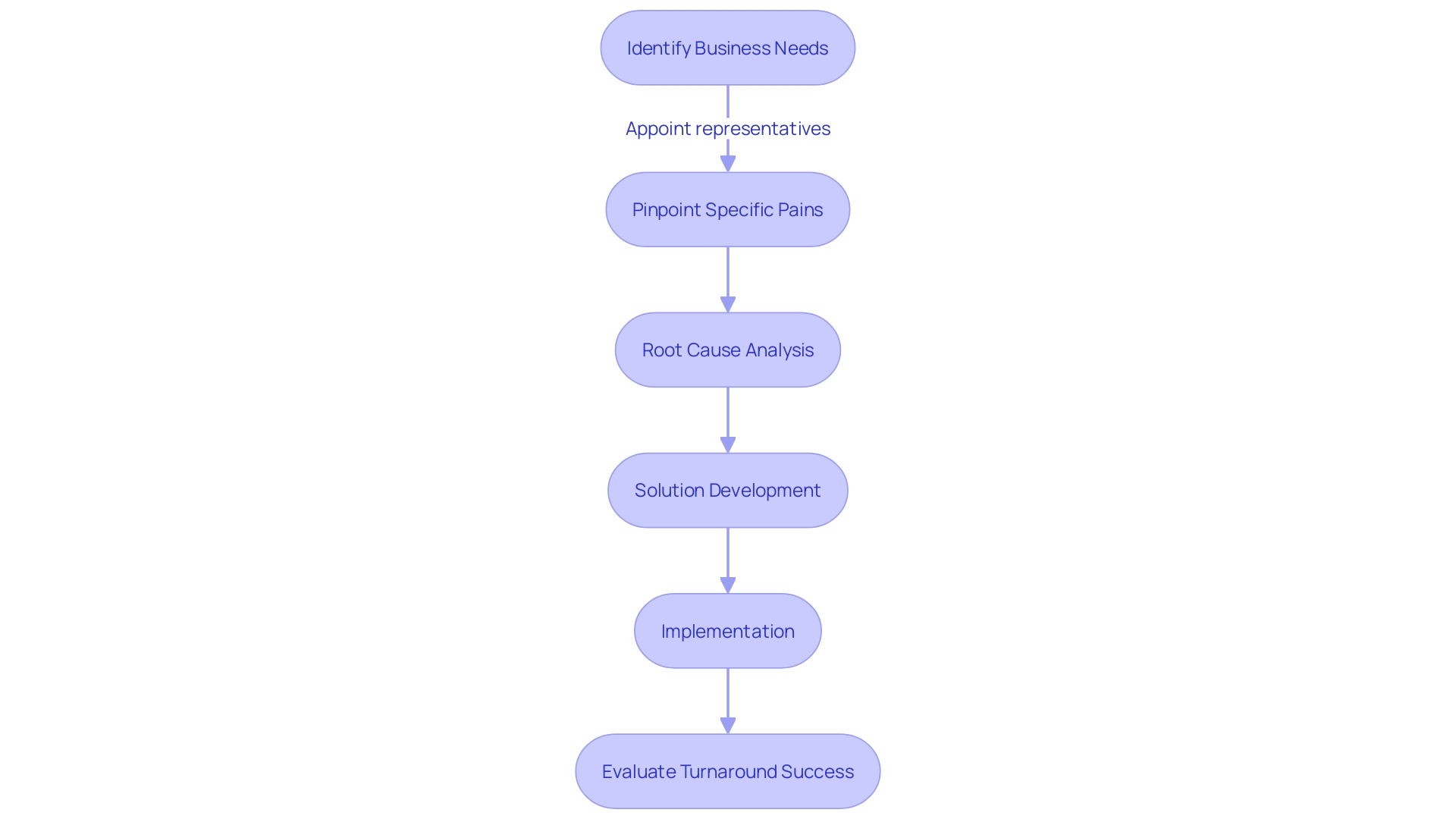
Setting Clear Goals and Objectives for the Turnaround
When Guthrie Clinic focused on improving community health, they knew success would depend on setting clear objectives. Their strategy was to not just offer healthcare but to promote overall well-being, a goal which was both specific and holistic. Similarly, when a major city center hotel aimed to boost their F&B sales, clear milestones were crucial. They recognized the necessity of comprehending their target audience primarily, a strategy that resulted in outstanding feedback and a substantial boost in sales in just one week.
These cases exemplify the power of SMART goals—specific, measurable, achievable, relevant, and time-bound. A goal without a measurable outcome is like a sports competition without a scoreboard or a timekeeper. Goals need to be quantified so progress can be tracked, and deadlines need to be set to prioritize efforts effectively.
Certainly, according to industry professionals, establishing an exact sales goal or determining the appearance of an 'improved job' can significantly alter the result. It's not just about having a wish list—it's about knowing exactly what's on it and the steps to take to get there. This approach helps in focusing efforts on the most impactful tasks, ensuring that every action taken aligns with the ultimate vision of success.
Data supports this strategy, indicating that enterprises must adjust every two to five years to remain competitive, with forces of the market and technological advancements serving as key catalysts of change. In an environment where a considerable portion of the workforce feels overwhelmed by daily tasks, managing time effectively to achieve these goals becomes even more critical.
For CFOs, who must balance long-term financial strategies with immediate operational needs, the lesson is clear: well-defined goals are not just beneficial but necessary for successful turnaround and management. By setting and adhering to clear objectives, leaders can chart a course for recovery and growth that is understood and embraced by the entire organization.
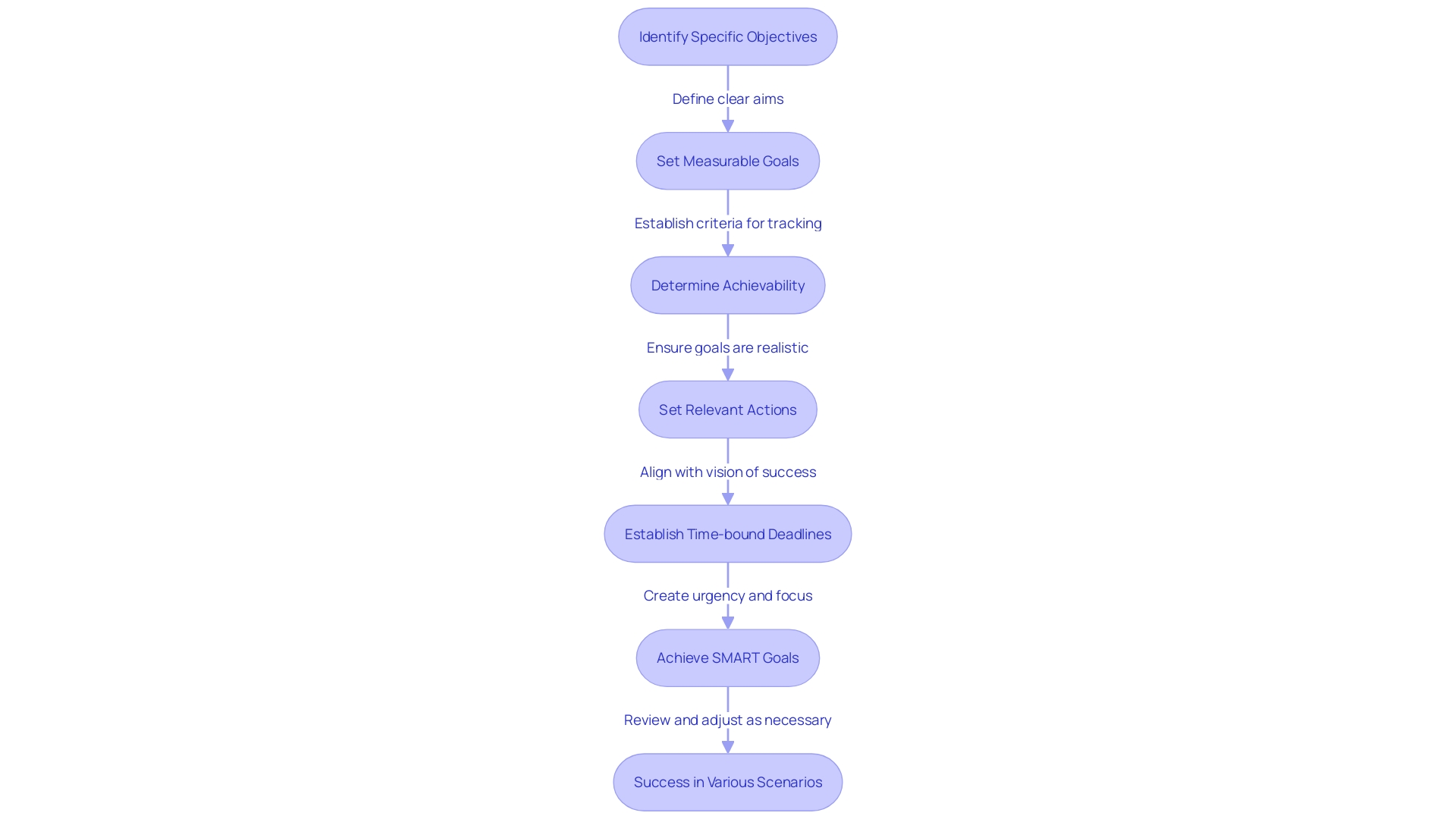
Developing a Comprehensive Turnaround Plan
Creating a roadmap that guides an organization through the twists and turns of a challenging industry landscape is similar to developing a comprehensive turnaround plan. A standout example of this is the City of Thunder Bay's implementation of their Asset Management Plan, Phase One, and the Future-Ready Roadmap. With the support of the Federation of Canadian Municipality's Municipal Asset Management Program, Thunder Bay not only enhanced its city services but also bolstered communication and public engagement significantly. This strategic approach was vital for retaining institutional knowledge amidst staff transitions, a common challenge in organizational turnarounds.
The importance of a well-crafted turnaround plan cannot be overstated. Statistics indicate that 51% of enterprises cite market competition and growth opportunities as catalysts for change, with 41% acknowledging competitive pressure as a driving force. In the dynamic climate of business where technology rapidly evolves, adapting every two to five years becomes essential for survival. For Thunder Bay, the incorporation of asset management into the strategic fabric of the organization resulted in proactive decision-making and reduced risks of future complications, emphasizing the efficacy of their turnaround approach.
Economic recovery periods present unique opportunities for companies to redefine their position in the industry. As evidenced by Builders FirstSource's remarkable ascent to the top of the Fastest-Growing Companies list, focusing on long-term objectives and leveraging technology to boost efficiency can significantly contribute to an organization's success. This approach, combined with asset management planning as seen in Thunder Bay, can ensure that a company not only navigates through immediate challenges but also sets the stage for sustained growth and profitability in the years to come.
Key Elements of a Turnaround Strategy
An effective turnaround strategy requires a multifaceted approach, integrating key elements such as strategic and financial restructuring, operational improvements, and stakeholder engagement. For instance, a major branded hotel in a bustling city center leveraged its prime location to attract diners and revamp its F&B sales. By grasping the significance of knowledge about the industry and adopting a lifestyle brand approach, the hotel established a new culture surrounding its brand, nurturing an emotional connection with customers.
Operational efficiency is often a critical component of a turnaround, with process automation serving as a gauge of how well an enterprise optimizes its resources. For example, by automating a significant portion of its processes, a company can increase efficiency and reduce costs. This shift is part of a broader digital transformation, which requires regular evaluation and adjustment of metrics to stay aligned with changing goals and economic conditions. A balanced scorecard can provide a comprehensive view across financial, customer, internal processes, and innovation dimensions, assisting organizations in maintaining a balanced perspective on their transformation journey.
Furthermore, transparent communication of digital transformation results to stakeholders is crucial. It builds trust and secures continued support for ongoing and future initiatives. According to recent statistics, 79.7% of businesses need to adapt every two to five years to stay competitive, underscoring the dynamic nature of the digital landscape.
Additionally, strategic planning is an art form rooted in science, allowing organizations to navigate unpredictable market conditions. Competitive positioning is particularly important for small and medium-sized manufacturers (SMMs) to differentiate themselves in a crowded marketplace. A comprehensive approach that leverages strengths and opportunities is essential for achieving long-term goals.
Lastly, when considering mergers, acquisitions, or sales, it's vital to have an organized process to evaluate, decide, plan, and implement changes. This process must involve listening to and engaging with your team and customers. The significance of a well-planned approach and its execution is emphasized as a weak execution can result in the failure to achieve the theoretical strength in numbers, and not every merger or acquisition generates value.
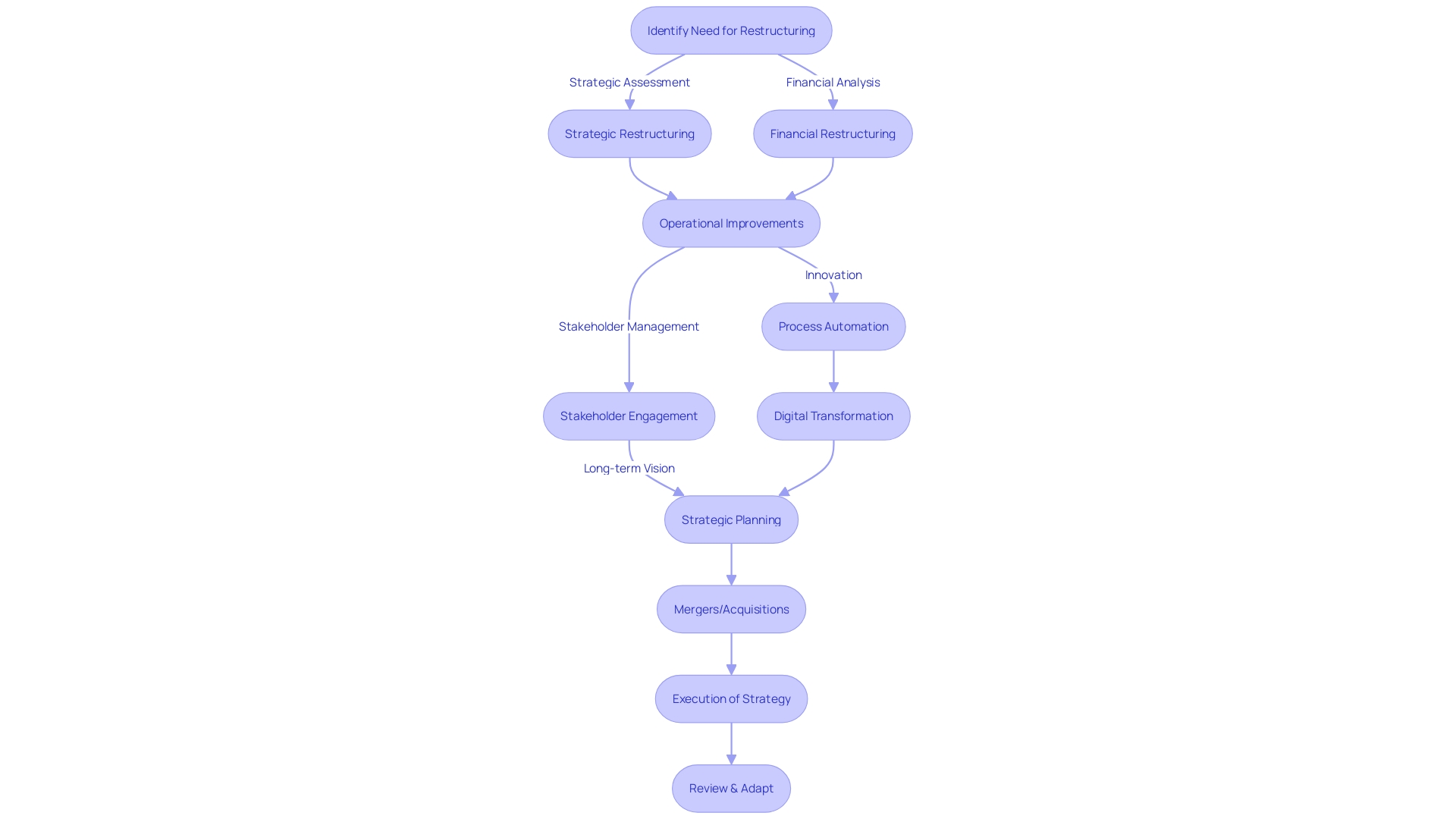
Strategic Restructuring and Repositioning
Adapting to the constantly changing corporate environment necessitates flexibility and a readiness to adopt strategic restructuring and repositioning. With customer behaviors and market dynamics in constant flux, companies must regularly assess and adjust their strategies. Whether it's a decline in sales or margins, increased competition, or shifts in consumer preferences, these signals indicate the need for a pivot. A poignant reminder that change is indeed the only constant, Joan Beets articulates the essence of transformation by stating, 'Change is the only constant thing in life – and in commerce.' This transformation often entails a complex process that alters the company's operational and organizational fabric, aiming to enhance efficiency and strategic focus while being mindful of its impact on the workforce.
The history of Xerox serves as a cautionary tale of what can happen without timely business pivoting. Due to Xerox's failure to adapt, their market value drastically declined from $36.3 billion in 1998 to a mere $1.63 billion in recent times, despite their legacy of innovation which includes the creation of the graphical user interface and the mouse. This emphasizes the crucial importance of transformation and realigning in response to recognized shifts in technology and customer behavior.
On the other hand, companies like Rite Aid have taken proactive steps towards repositioning by initiating a financial restructuring plan to reduce debt and increase flexibility, allowing them to focus on their transformation. Similarly, Nokia's forward-looking statements reveal a strategic vision that encompasses product launches, growth management, and operational efficiency, all while adapting to global economic conditions and market demands.
Successful transformations require a clear and compelling rationale that resonates with all stakeholders. Based on Bryan Solis' research, competition and growth opportunities are the main catalysts for transformation, with 51% of organizations acknowledging the necessity to adjust periodically in order to stay competitive. This is supported by McKinsey's Global Survey, which emphasizes the value and potential loss at every stage of transformation efforts. Transformations that succeed involve actions that reflect the will, skill, rigor, and scope, ultimately leading to sustained performance improvements and a competitive edge.
Essentially, strategic restructuring and repositioning are more than just jargon; they are vital actions that ensure a company's survival and prosperity in an unpredictable world. As Peter Drucker wisely noted, leveraging strengths is essential, but those strengths must be adaptable to withstand and thrive amidst disruptions. By learning from the successes and failures of others, organizations can navigate the challenges of change and emerge stronger and more resilient.

Financial Restructuring and Management
Accomplishing a prosperous turnaround often depends on the strategic realignment of financial structures and management practices. A shining example of this is TBC Bank, Georgia's premier financial institution, renowned for its commitment to facilitating seamless banking experiences. TBC Bank has consistently focused on enhancing digital product delivery, thereby making strides in operational flexibility and customer satisfaction.
Similarly, Nets, a leader in digital payment solutions, has exemplified the importance of presenting technical data in accessible formats, ensuring that clients across Europe can engage with the information effectively. Their innovative approach to problem-solving underscores the significance of agility and adaptability in today's technology-driven landscape.
Rite Aid Corporation's recent strides in financial restructuring illustrate the power of decisive action in the face of adversity. By reaching an agreement with senior secured noteholders and entering a court-supervised Chapter 11 process, Rite Aid is strategically reducing debt and enhancing financial flexibility. This not only enables the continuation of customer services but positions the company for future health and growth.
These stories confirm that a carefully thought-out financial plan, combined with a readiness to adjust and create, can act as the foundation for revitalizing operational activities and preparing the ground for lasting progress.
Stakeholder Engagement and Communication
In the business arena, the importance of stakeholder engagement and communication cannot be overstated, particularly during the critical phase of a turnaround strategy. A case in point is Stora Enso, a Finnish company with a storied history dating back to 1288. Confronted with shifts in the industry and advancements in technology decreasing the need for paper, they embarked on a daring transition into a company specializing in renewable materials. This strategic pivot wasn't merely a shift in product offerings; it was a fundamental transformation in engaging with key stakeholders—employees, customers, suppliers, and investors—to propel the transition.
When Stora Enso embarked on their journey, they recognized the necessity of aligning stakeholder interests with the company's new direction. They achieved this by developing sustainable alternatives to traditional products and engaging partners throughout the value chain, showing how cooperation can make a difference in different industries. This approach was particularly pertinent as the paper sector experienced a decline, with newsprint falling from 12 percent to less than 4 percent of global production over two decades.
The company's commitment to stakeholder involvement was further exemplified when they faced the difficult decision to reduce their workforce by over a third. This restructuring was essential to restoring profitability and ensuring the long-term viability of the enterprise. By maintaining transparent communication with stakeholders throughout the process, Stora Enso cultivated support and fostered a cooperative environment conducive to the success of their turnaround efforts.
This case emphasizes the wider pattern where companies need to give priority to stakeholder analysis to successfully navigate the complexities of management transitions. A principal analyst highlighted that competitive pressure and the need for market adaptation are driving forces behind organizational transformations. With almost 80% of enterprises requiring to adjust every two to five years, involving stakeholders becomes a crucial element of navigating these changes.
Stora Enso's example illustrates a fundamental truth in project management: understanding and prioritizing stakeholders is not just about minimizing conflicts—it's about maximizing success. As enterprises look to the future, integrating stakeholder needs and expectations into their strategic planning, as Stora Enso did, could mean the difference between faltering and flourishing in an ever-evolving marketplace.
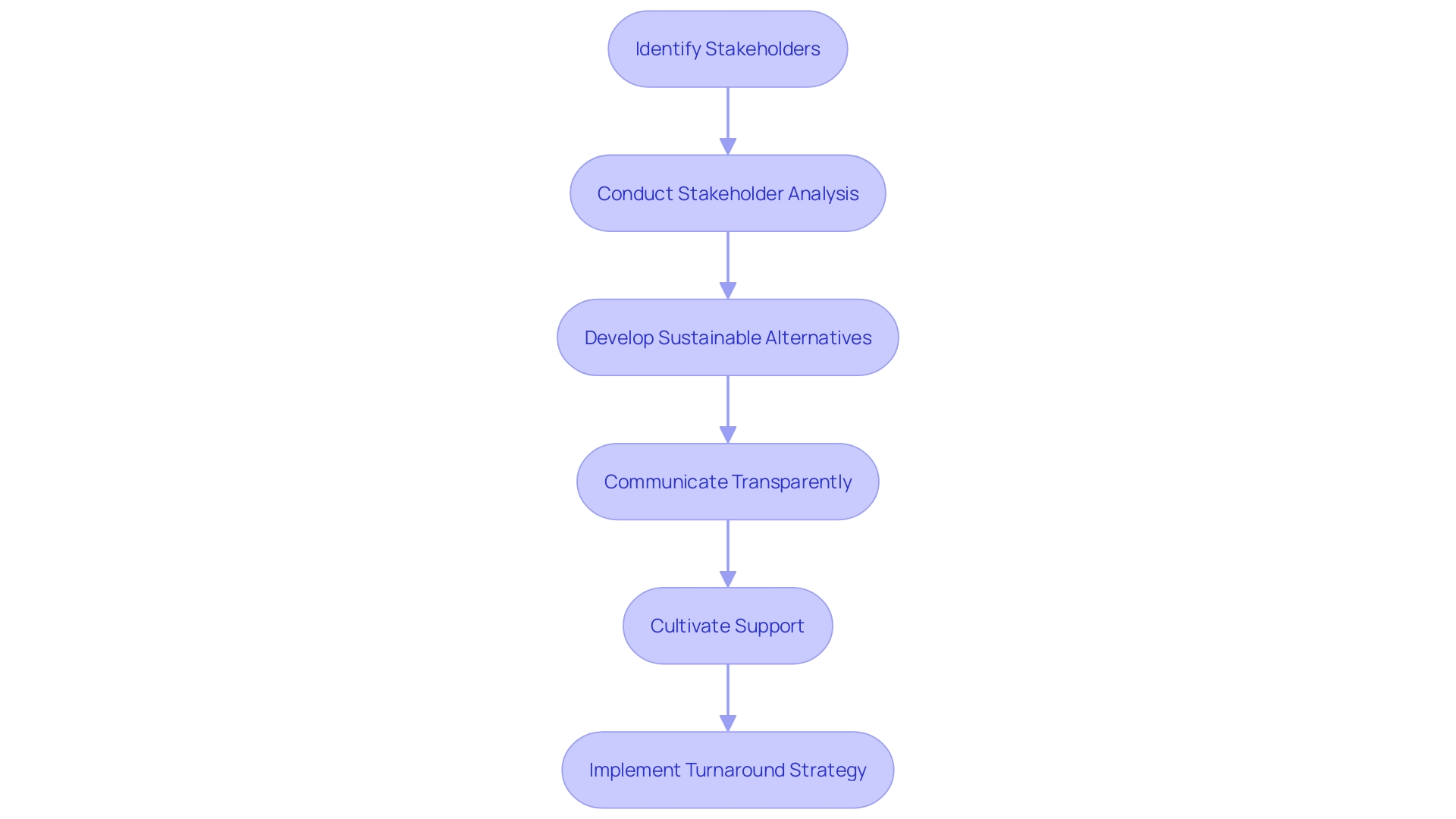
Executing the Turnaround Plan
A well-crafted turnaround plan is the blueprint for recovery, but it's the execution that truly revitalizes a floundering business. It's not only about devising plans; it's about implementing them with the type of guidance that navigates through business rivalry and exploits expansion possibilities. For instance, consider the technical finesse of using Django, Tailwind, and HTMX to enhance user experience, coupled with a robust SEO overhaul that targets competitor traffic analysis for content creation. It's this meticulous approach that can lead to a surge in sales and positive customer feedback.
Real-world successes echo the need for agile and precise execution. A hotel in a prime location failing to boost its Food & Beverage sales demonstrates the importance of comprehending the market and devising approaches that capitalize on the hotel's strengths. Similarly, Toyota's venture, Woven Planet, faced hiccups not due to vision but execution—reminding us that even the most innovative projects, like building software standards for an industry, demand meticulous planning and delivery.
Moreover, the tale of a financial expert from Uzbekistan, climbing from a junior specialist to a deputy bank manager, underscores the importance of financial analysis and risk management in steering a business towards success. Their expertise in developing investment strategies and attracting new clients is a testament to the power of informed decision-making in uncertain conditions.
In the realm of startups, where technology, healthcare, and finance are burgeoning domains, the need for change is constant. An astonishing 79.7% of enterprises need to adjust every two to five years to remain viable, compelled by competitive pressures and technological advancements. The success of any transformation rests on three pillars: inclusive design, clear leadership, and an inspiring vision. With these in place, companies can look forward to not just surviving but thriving in their new strategic directions.
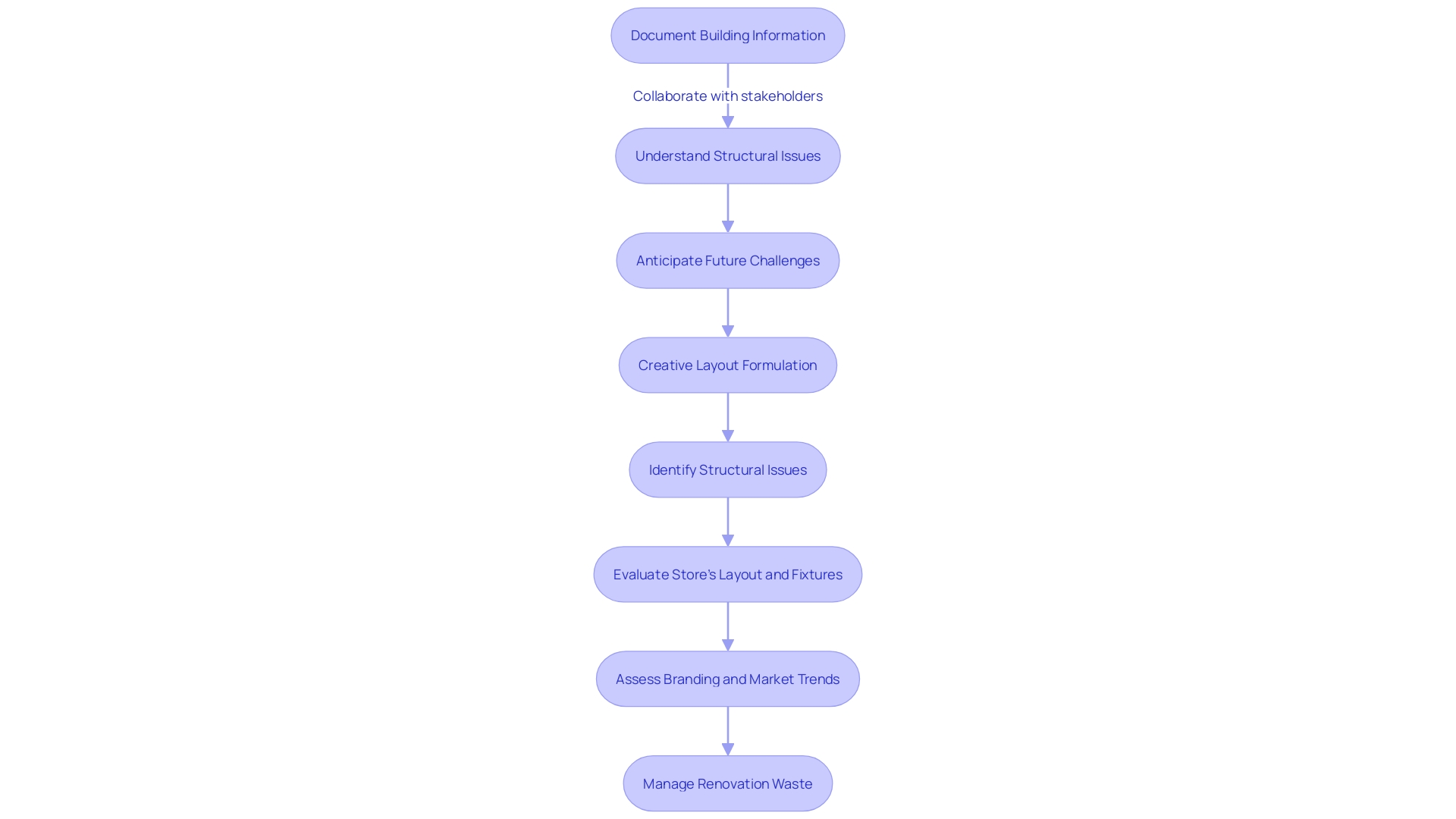
Monitoring and Adjusting the Turnaround Efforts
Key performance indicators (KPIs) are not just numbers on a dashboard; they are the navigational tools that guide companies through the murky waters of a turnaround. They offer insights into performance and shine a light on areas that demand attention. For example, consider how the hospitality industry leverages KPIs to drive revenue and assess operational efficiency. A hotel might track year-over-year revenue growth or aim for a certain percentage increase in Revenue per Available Room (RevPAR). These targets are not arbitrary; they are tied to tangible objectives that can steer a business towards profitability and growth.
In the realm of healthcare, the power of data transcends operational metrics and ventures into transformative strategies that reshape patient care delivery. The adoption of digital tools and analytics has been instrumental in this sector's evolution, allowing for a more informed and efficient approach to healthcare management.
Data's critical role in decision-making is further exemplified by Delivery Hero's initiative to streamline IT processes. By addressing the bottleneck of account recovery, the company not only improved employee productivity but also enhanced overall operational effectiveness—a testament to the value of targeted problem-solving and agile adjustments.
However, today's economic landscape, dotted by the unpredictable ebbs and flows of global supply chains and market dynamics, underscores the necessity of continuous monitoring and adaptability. The stability of the global supply chain, as tracked by institutions like the New York Federal Reserve, highlights the interconnected nature of enterprises and the importance of maintaining a resilient operational framework.
From this perspective, it's evident that the prudent utilization of KPIs and the flexibility to adapt as necessary are not only vital lifelines for companies aiming to maneuver through periods of uncertainty. Whether it's the GDP fluctuations as seen in New Zealand's economic indicators or the challenges faced by UK small enterprises amidst slow sales growth and rising late payment times, these tools and tactics are key to steering any enterprise towards success in tumultuous times.

Evaluating the Success of the Turnaround Strategy
To accurately assess the effectiveness of a company's efforts to turn around its performance, it's essential to utilize thorough evaluation approaches and metrics. One approach is examining case studies like Thunder Bay's Asset Management Plan, which illustrates the positive impact of strategic asset management on municipal services. This plan, supported by the Federation of Canadian Municipality’s grant, demonstrates how effective communication and engagement approaches can improve staff retention and knowledge transfer, thereby facilitating a successful turnaround. Furthermore, incorporating customer service metrics, such as Net Promoter Score, Customer Satisfaction, and First Call Resolution, provides insights into customer experiences and the effectiveness of the turnaround efforts. These metrics are crucial in evaluating the impact of the approach on customer relationships and operational procedures. Additionally, insights from economics experts who analyze labor, politics, technology, and demographic trends can inform the evaluation process, ensuring it reflects current economic conditions. With statistics indicating that competitive pressures and industry rivalry drive transformation in 51% of businesses and that 79.7% of enterprises need to adapt every two to five years, it's evident that continuous evaluation is crucial. Furthermore, with the digital transformation market projected to surpass $1 trillion by 2025, and taking into account that change management approaches greatly enhance results, incorporating these practices into the turnaround plan is crucial. Ultimately, a successful evaluation not only confirms the efficacy of the implemented strategies but also pinpoints areas for improvement, enabling leaders to refine their approach and better prepare for future challenges.

Case Studies of Successful Business Turnarounds
Analyzing case studies of successful company turnarounds provides invaluable insights into the strategic maneuvers and decisive actions that can revive a struggling organization. One such example involves a steel-recycling company facing the all-too-common challenge of spiraling healthcare costs. By severing ties with traditional provider networks and opting for a smaller administrator, they achieved the transparency needed to implement reference-based pricing, which ultimately aligned their healthcare expenditures more closely with Medicare rates.
The results were telling: with around 900 employees across multiple states, the decision to take a data-driven approach to insurance claims not only contained costs but also laid the groundwork for sustainable operational health. It's a testament to the importance of thorough research and the willingness to confront challenging sacrifices head-on.
Moreover, it’s critical for leaders to adopt a positive mindset and engage in continuous learning, as exemplified by businesses that have embraced the evolving landscape of labor, politics, technology, and demographics. In one telling case, a major hotel was unable to boost its food and beverage sales despite a prime city center location. By acknowledging the necessity to comprehend their target audience and capitalize on their position, they encountered a substantial boost in sales and received positive feedback—all within the initial week of implementing a new approach.
These stories not only highlight the importance of agility and the ability to pivot in response to market signals but also underscore the value of sales skills. With over 600,000 startups worldwide, the ability to express the reasoning and advantages of a decision is crucial. Whether it's gaining customer buy-in, securing financing, or convincing stakeholders of a new process, the skills honed through sales experience are invaluable assets.
In essence, these case studies serve as a roadmap for business leaders seeking to navigate their companies through turbulent times. They are proof that with a detailed understanding of operational challenges, a commitment to strategic change, and the courage to make tough decisions, turnaround success is not just possible—it's achievable.
Conclusion
In conclusion, a successful business turnaround requires assessing the current state of the business, setting clear goals, and developing a comprehensive plan. It involves strategic and financial restructuring, operational improvements, stakeholder engagement, and effective communication.
Executing the turnaround plan with agility and monitoring progress through key performance indicators are crucial for success. Continuous evaluation and adjustments ensure the strategy remains effective.
Case studies of successful turnarounds emphasize the importance of research, adaptability, positive mindset, and sales skills. By implementing these strategies, CFOs can guide their organizations towards recovery and growth.
In summary, a confident and action-oriented approach is essential for CFOs aiming to navigate their organizations through challenging times. By embracing change, setting clear goals, and executing a comprehensive turnaround plan, they can lead their organizations to success.
Take action now and execute your turnaround plan with agility to achieve success!




